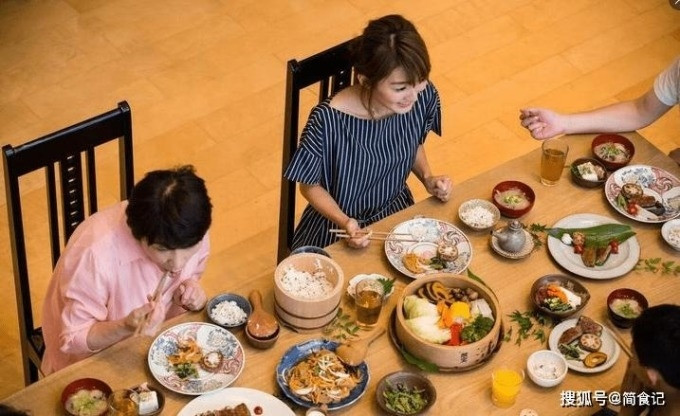Japanese culinary culture is famous for its diversity, great taste and exquisite appearance.
A Japanese meal usually consists of rice, seafood, vegetables, tofu, and miso soup. Japanese cuisine focuses on the color, presentation, and freshness of the food, while pursuing natural flavors and a healthy lifestyle. In addition, Japanese culinary culture shows respect and pursuit of raw materials, focusing on flavor.
Some of the dishes include sushi, ramen, and onigiri. Sushi is one of the most famous dishes consisting of rice and fresh seafood. Ramen is a popular fast food and different regions have their own styles of ramen, such as Tokyo ramen, Kyoto ramen, and Sapporo ramen. Onigiri (rice ball) is a traditional dish in which rice is shaped into a triangle or circle and filled with various fillings such as fish, seaweed, dried umeboshi, etc. Rice balls are often served as part of a bento (boxed lunch) and are very popular during lunchtime in Japan.
In addition to the above dishes, Japan also has many other typical dishes and snacks such as tempura, sukiyaki, fried noodles, and eel rice.

Japanese meals pay great attention to nutritional balance and emphasize moderate amounts. Illustration: Aboluowang
Learn about the three meals of the Japanese, you will understand why they live the longest and maintain a low-fat body.
A Japanese breakfast usually consists of the following ingredients: White rice, soup - with a popular breakfast soup being miso soup, made from miso (soybean paste) simmered with various vegetables or tofu. The Japanese have a habit of eating fish or seafood for breakfast, such as grilled fish, steamed fish with eggs or fish cakes.
Seaweed is often rolled into small rolls or used to wrap rice balls. In addition to this main dish, the Japanese also have many side dishes such as kimchi, pickled vegetables, hot spring eggs... to eat with rice.
For lunch, because Japanese people are busy with work, they often eat simple and balanced meals. Bento is very popular for this meal. Bento in Japan is a boxed lunch containing many different types of combined foods such as fish, meat, vegetables, fried noodles, rice balls. Bento can be purchased at supermarkets, convenience stores or restaurants. Of course, in addition, users also have many choices of noodles such as ramen, udon, soba, which often come with soup and various toppings.
Dinner is the big meal of the day for Japanese people. Rice or pasta is the main food choice, such as boiled rice, fried rice. They often use eggs in various forms, such as fried eggs, boiled eggs or sunny side up eggs.
The Japanese place great importance on balance in their meals, so dinner will include lots of vegetables. Vegetables can be stir-fried, grilled or salad. As an island nation, Japan has an abundance of seafood. Dinner often includes fresh seafood such as sashimi, sushi or grilled fish.
Explaining why Japan is one of the countries with a relatively high life expectancy, nutritionists explain that it is due to their eating habits. The Japanese diet is based on fresh, natural ingredients, emphasizing balance, nutrition and moderation, rich in seafood, vegetables, tofu, soy foods. These foods contain a lot of protein, healthy fats, fiber and many vitamins that are good for heart health and overall health.
In addition, Japanese people control the amount of food they eat, Japanese culinary culture emphasizes moderate quantity, paying attention to taste and enjoying each bite of food in detail. They tend to eat small bowls of rice and many small dishes, which can help control calorie intake and reduce the risk of obesity and chronic diseases.
According to VnExpress